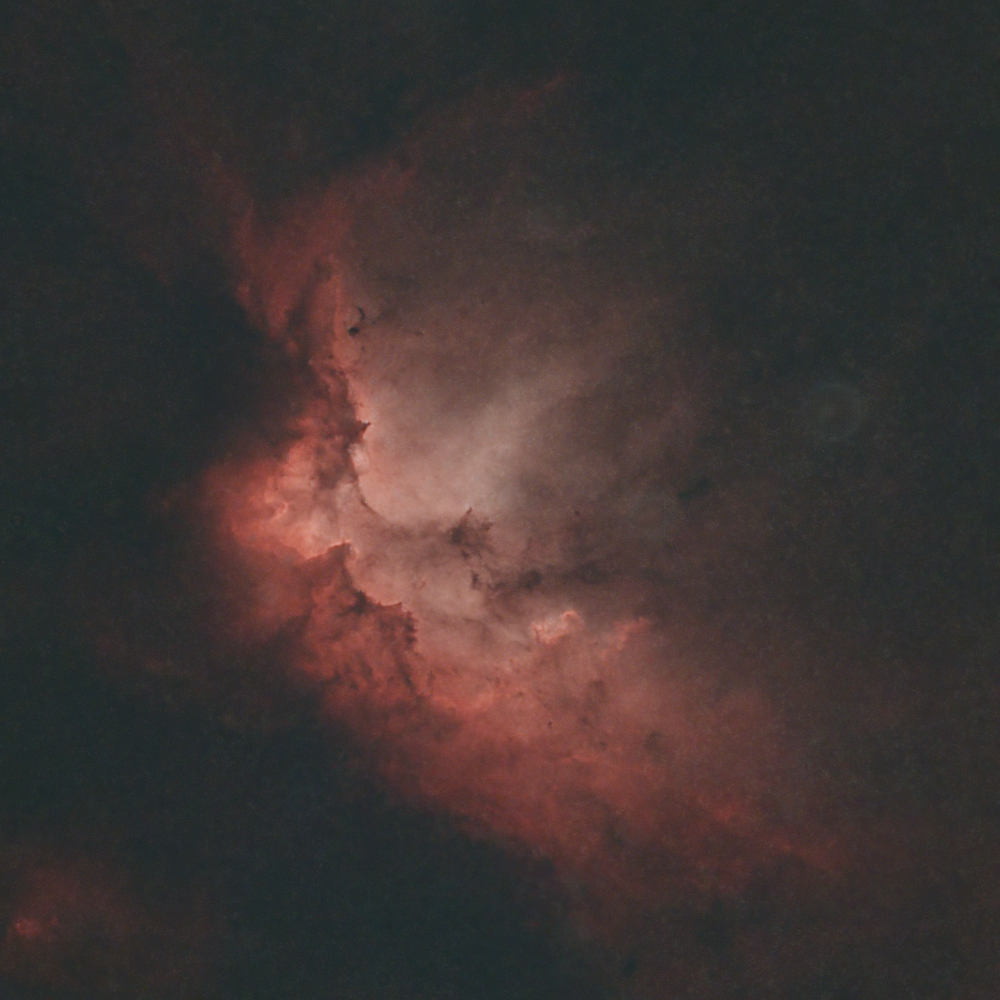The Wizard Nebula is a region of glowing gases (nebulosity) around a cluster of stars known as NGC 7380 (NGC = New General Catalog). The gases are primarily hydrogen and oxygen and glow because they are ionized–ultraviolet light from the nearby stars imparts energy to the electrons in the gases, sometimes resulting in the electrons being stripped from the gas atom’s nucleus. The electrons will ultimately recombine with the atoms and give off their excess energy in the form of the light that we see.
The Wizard Nebula is thought to be 5 – 10 million years old. It is 20 light years across and lies a distance of about 8500 light years from us. It lies in the constellation Cepheus, which is in the northern region of the sky.
This image is once again a narrow-band image using the Optolong L-Extreme dual-band filter, shooting with a ZWO ASI533MC Pro cooled color camera through a Sky-Watcher Esprit 100 f/5.5 refractor on an iOptron GEM45 mount. Processed using PixInsight, Affinity Photo, and Denoise AI. I used 136 three-minute exposures to create the final image.
The Optolong narrow-band filter records light primarily at 656 nm (red) and 460 nm (green). These two wavelengths are some of the most common coming from emission nebula. I remapped the original colors to a false color palette to bring out detail and make the image more interesting. This is a common technique in astrophotography for narrow-band images, and even most of the Hubble images you see have the colors remapped.
This was a challenging target because it sits in the middle of the Milky Way in a dense field of stars. I spent quite a bit of time and effort to knock down the stars in the image to better show the nebula itself.
I’ve been using PixInsight of late to do my image processing and produce images like the one above. This image in particular looked quite different in the early stages of processing. Here’s what the image looked like after calibration, stacking, color correction, and stretching:
You can see that the stars overwhelm the image. Thankfully, there is a tool called Starnet++ that can be used to automatically remove the stars. It’s not perfect, though, and in cases like this it often leaves significant artifact. Here’s the result:
You can definitely see artifact from Starnet++ left over in the starless image. Thankfully, applying a few iterations of noise reduction and sharpening fixes the image up so it’s more presentable.
There are other techniques for doing star reduction, but I like to totally remove the stars prior to working with the nebula, especially if I’m using any techniques that modify the color palette. This way I can operate freely on the nebula without also changing the colors of the stars. Starnet++ will also produce an image containing only the stars. I can perform some star reduction on that image and then recombine the stars with the starless nebula later in the process. This is how the image at the top of the post was created.



